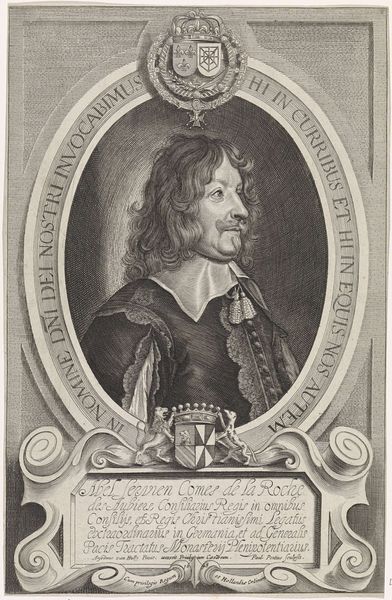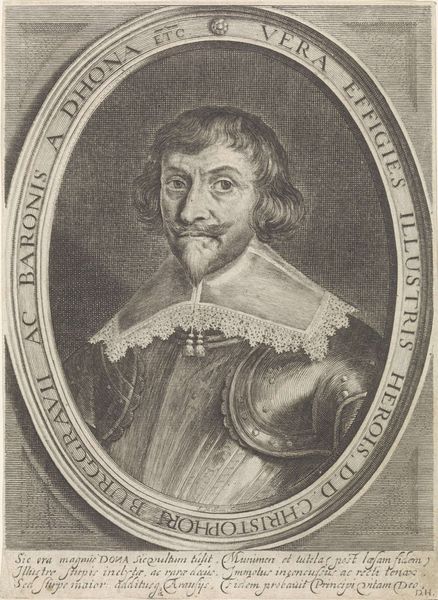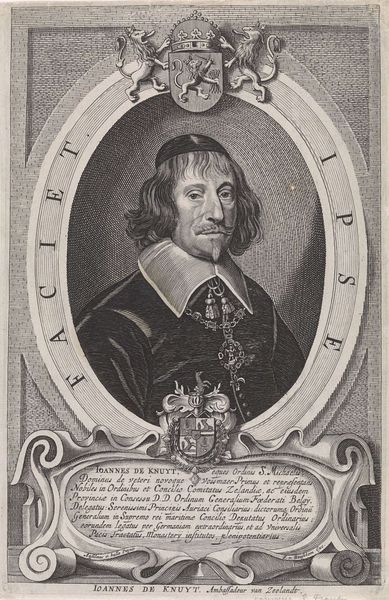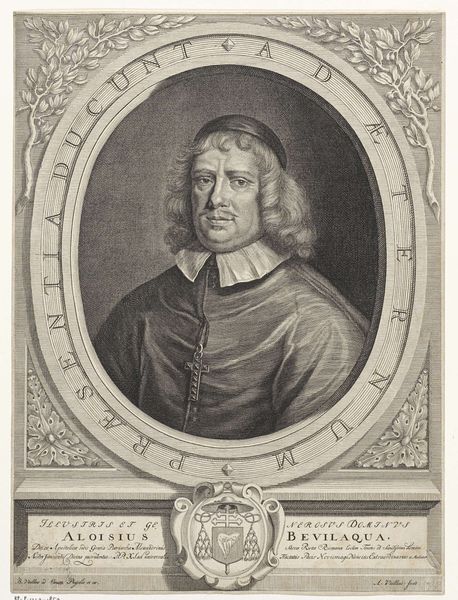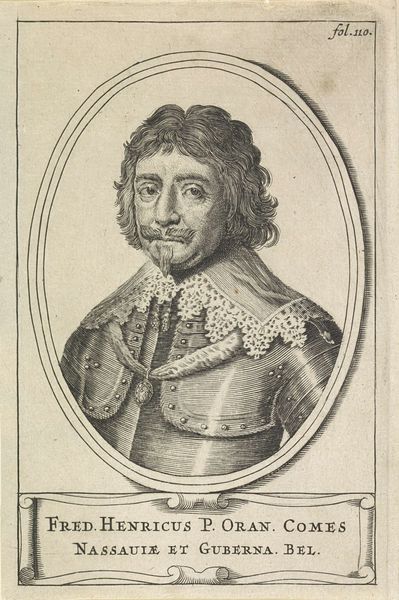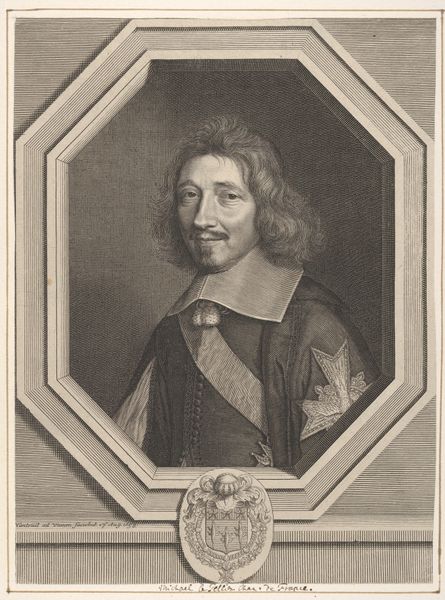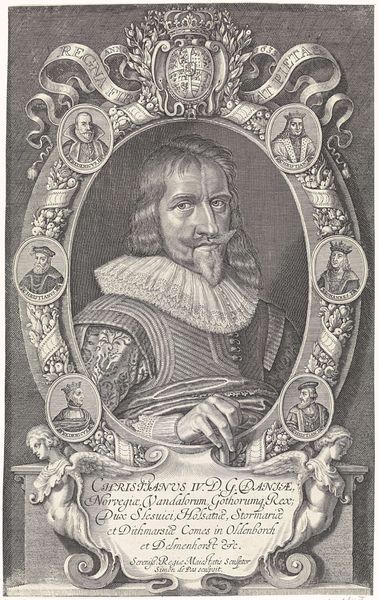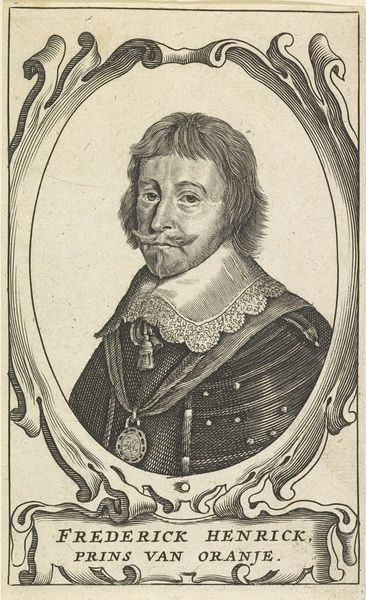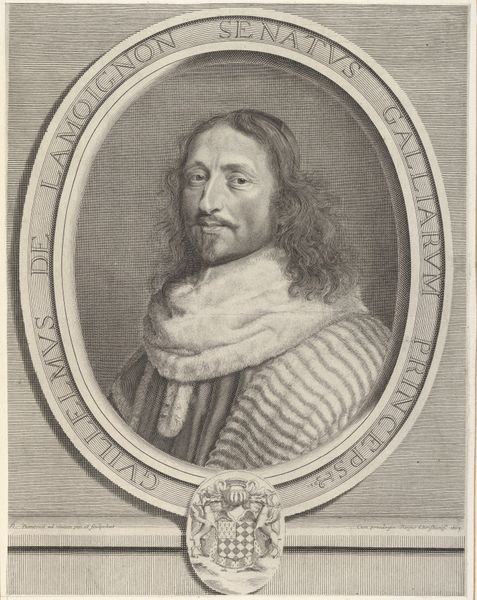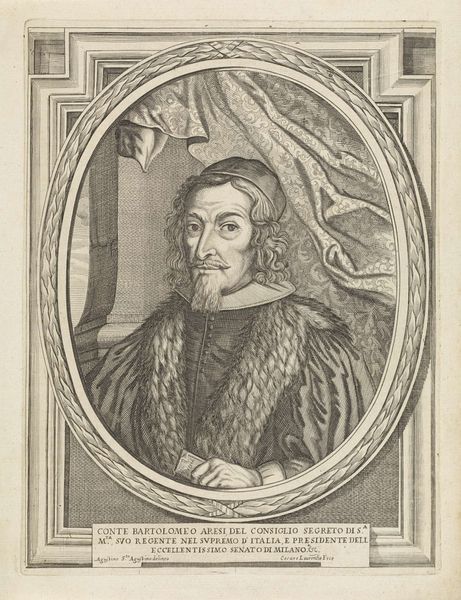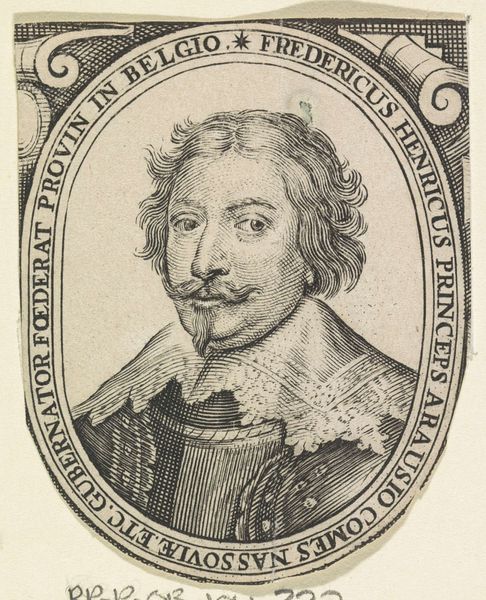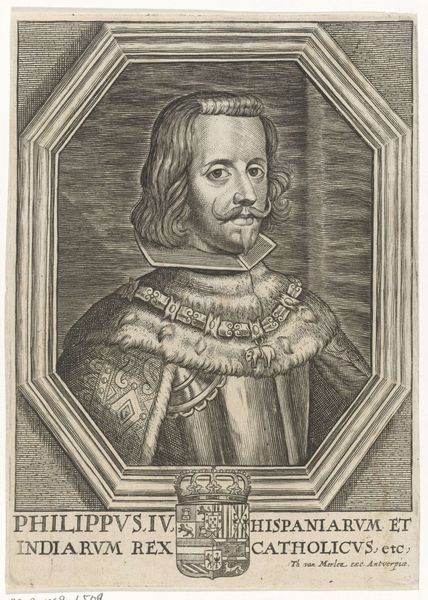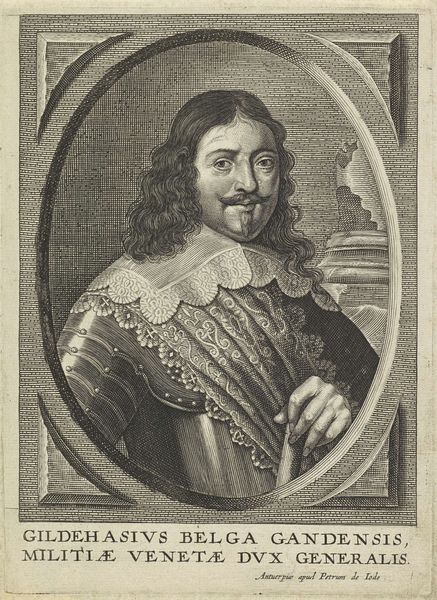
Portret van Christoph Bernard von Galen, bisschop van Munster 1650 - 1680
0:00
0:00
hugoallard
Rijksmuseum
print, engraving
#
portrait
#
baroque
# print
#
genre-painting
#
history-painting
#
engraving
Dimensions: height 402 mm, width 295 mm
Copyright: Rijks Museum: Open Domain
Editor: This is Hugo Allard's "Portret van Christoph Bernard von Galen, bisschop van Munster," made sometime between 1650 and 1680. It’s an engraving, so primarily black and white. The detailing is incredible! It gives the sitter such a powerful, imposing presence. What do you see in it? Curator: The image's power arises directly from its skillful manipulation of line and form. Notice how the oval frame contains the figure, emphasizing the portrait's self-contained nature. The sharp, clean lines of the engraving articulate detail—look at the texture in his garments. Editor: Yes, and the light catches the buttons so well, but remains mostly flat. The image almost appears to be lacking chiaroscuro and the textures appear mostly tactile, rather than illuminated. Is this a fair reading of this print? Curator: The strategic deployment of hatching and cross-hatching creates subtle variations in tone and shadow, yes. Rather than replicating the dramatic chiaroscuro of painting, however, the print leverages line to create texture and three-dimensionality. Editor: It's almost architectural. You can see how each individual etched line contributes to the overall structure, can't you? Curator: Precisely. Consider the relationship between the figure and the heraldic crest below. How do those forms interact? What impact does the lettering surrounding it contribute? Editor: I hadn't thought of the crest in relation to the figure before. They provide symmetry to the overall print; almost like bookends framing a story. I suppose that the relationship helps establish Von Galen's importance. Curator: Precisely! Reflect on how a contemporary audience might have interpreted this emphasis on form. We have a lot to consider.
Comments
No comments
Be the first to comment and join the conversation on the ultimate creative platform.
